SPECIAL TOPIC—The frontiers and applications of topological physics
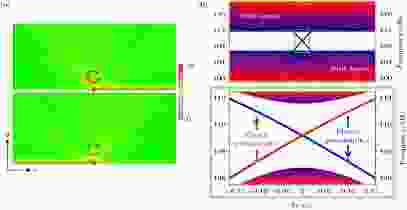
2019, 68 (22): 220302.
doi:10.7498/aps.68.20191463
Abstract +
Phonon is a quasi-particle excitation after the second quantization of lattice vibration. In the phonon framework, we can describe mechanics, elastic wave and thermal phenomena in solid uniformly. With the development of our understanding about solid state systems, phonon has become an important method to control device in solid state, which can be seen as a supplement and replacement for electronics and photonics. Among them, the modulation of elastic wave and heat conduction in phonon system has great theoretical and practical value. Elastic wave as an information carrier has the potential to construct new chip elements, while manipulating thermal phonon as an energy carrier can achieve the goal of energy transformation and device optimization. These fields have developed rapidly in recent years. A large number of novel materials such as thermal diodes, elastic meta-materials, thermal meta-materials, and heat pumping devices have been predicted and obtained. These developments are inseparable from the application of the concept of "topology" to phonon systems and the realization of non-reciprocal devices on various scales. In this paper, the topological and nonreciprocal phenomena in phonon systems are tentatively summarized. Besides, the latest research results are introduced and the development trend is prospected. The non-reciprocity of elastic wave and heat flow realized by time-dependent driving is reviewed with emphasis. This method has a great flexibility and can be similarly applied to multi-component systems on all scales.
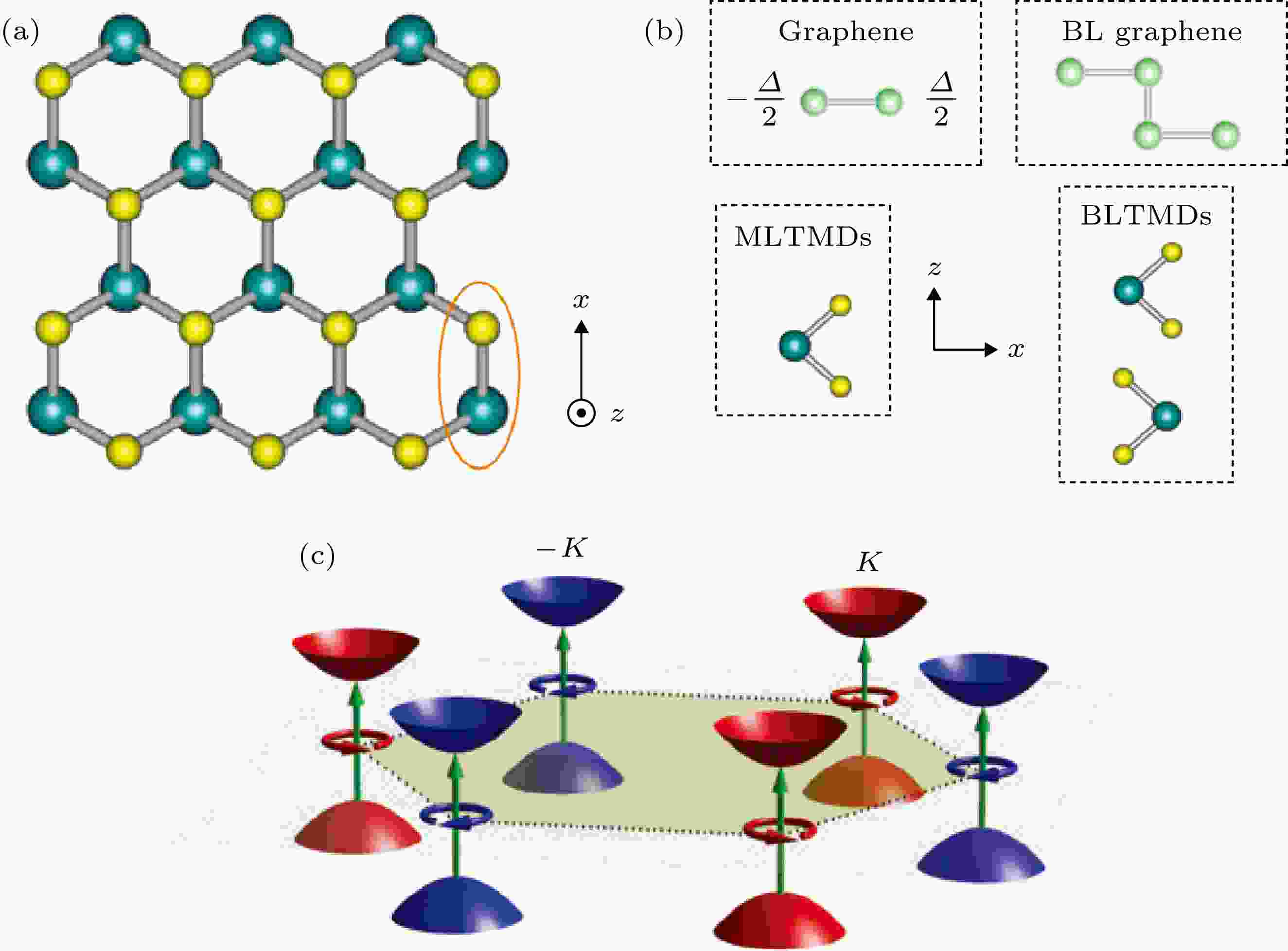
2019, 68 (22): 220303.
doi:10.7498/aps.68.20191317
Abstract +
When 2D materials with different lattice constants or lattice rotation angles are stacked together, a periodic moiré pattern will appear. Such moiré superlattice introduces a new two dimensional periodic potential, which can greatly change the physical properties of the original systems. Recent experimental studies of moiré superlattices formed by graphene on graphene and graphene on hexagonal boron nitride have revealed very rich strong correlation effects and topological effects due to novel states in superlattice minibands. It has been shown that flat bands in graphene-based moiré superlattice systems can host both topological states and strongly correlated states, which can be controlled by an external electric field. In bilayer graphene, ABC stacked trilayer graphene and twisted bilayer-bilayer graphene, the number of valence and conduction bands near the Dirac point and even the band topology and bandwidth can be changed by varying the stacking angle between graphene layers or the applied bias voltage. Moreover, the competition between kinetic energy and coulomb interaction depends on the bandwidth and the external electric field, and at the so-called magic angle mott insulator states and superconductivity were observed. Twisted bilayer-bilayer graphene has also been predicted to show similar intriguing properties, including electrically tunable strongly correlated insulators, superconductivity and many rich topological states. In graphene-based moiré systems, the combination of topological states and strong correlations is expected to lead to a broad range of novel phenomena that are not achievable in other material systems. Therefore, graphene moiré systems is likely to bring substantial progress to the study of topological materials. In this paper, we review theoretical and experimental investigations of the topological properties of graphene moiré superlattices, including topological domain wall states in bilayer graphene and topological effects in twisted bilayer graphene, ABC trilayer graphene and twisted double bilayer graphene. The origins of topological properties of these systems are discussed as well as topological phenomena observed in various experiments. Finally, recent near-field optical studies of the band structure and novel topological properties of graphene moiré superlattices are discussed.
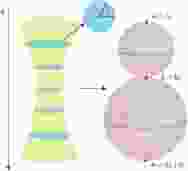
2019, 68 (22): 220304.
doi:10.7498/aps.68.20191410
Abstract +
In this review, we give a brief review on the recent progress in the theoretical research of quench dynamics in topological band systems. Beginning with two band models, we introduce conception of dynamical Chern number and give the connection between the dynamical Chern number and topological invariant in the corresponding equilibrium systems. Then by studying the 1 + 1 dimensional parent Hamiltonian, we show the complete dynamical classification of Altland-Zirnbauer classes, and show the crossing of entanglement spectrum as a feature of dynamical bulk edge correspondence. Furthermore, we consider the impact of the disorder and band dispersion. At last, we show the experimental simulation of dynamical Chern number by a superconducting qubit system.

2019, 68 (22): 220305.
doi:10.7498/aps.68.20191398
Abstract +
Based on the correspondence between tight-binding Hamiltonian in condensed matter physics and the Kirchhoff’s current equations in lumped parameters circuits, profuse topological states can be mapped from the former to the latter. In this article, the electric-circuit realizations of 1D SSH model, 3D nodal-line and Weyl semimetals are devised and elaborated, in which the edge states, surface drum-head and Fermi-arc states are appearing on the surface of the circuit lattice. Of these circuits, the effective hopping terms in Hamiltonian have high degree of freedom. The hopping strength, distance and dimension are easy to tune, and therefore our design is convenient to be extended to non-Hermitian and four or higher dimensional cases, making the fancy states that hard to reach in conventional condensed matter now at our fingertips. Besides, the electric circuit has the advantage of plentiful functional elements and mature manufacture techniques, thus being a promising platform to explore exotic states of matter.

2019, 68 (22): 224101.
doi:10.7498/aps.68.20191085
Abstract +
The miniaturization of electromagnetic devices is a long-term theme for the development of modern technologies to achieve higher flexibilities, better performances, and higher density integration. Surface plasmon polaritons (SPPs) provide a powerful solution for reducing the size of integrated electromagnetic device due to its deep subwavelength confinement. However, materials or structures that support SPPs inevitably have impurities or structural defects, which leads to the loss of the propagating mode. In order to avoid scattering from impurities or defects, topological structures are introduced to address issues of discontinuities and have been proved to be an effective solution. In this paper, we first review the recent efforts devoted to SPPs based optical devices and those of artificial surface plasmon in terahertz/microwave band, and then summarize several important topological systems of SPPs. Finally, we present our perspectives on the future developments of this field.

2019, 68 (22): 224206.
doi:10.7498/aps.68.20191437
Abstract +
Inspired by topological phases and phase transitions in condensed matter, a new research field based on topological band theory, topological photonics, has emerged. It breaks through the traditional idea of light regulation by optical superposition principle of real space and energy band theory of solids of reciprocal space, providing a novel mechanism of optical regulation and rich properties of transport and light manipulation. Such as transmission properties of against backscattering and rubout to defects and disorders, selective transports dependent on spin-orbit coupling, and high dimensional manipulation of light. This review paper classifies different topological photonic systems by dimensions, briefly introducing the topological model, the novel physical phenomena, and the corresponding physical picture, such as SSH models, photonic quantum Hall effects, photonic quantum spin Hall effects, photonic Floquet topological insulator, and photonic three-dimensional topological insulator; other advanced platforms such as higher-order, non-Hermitian, and nonlinear topological platforms are also involved; a summary and outlook about the current development, advantages, and challenges of this field are present in the end.
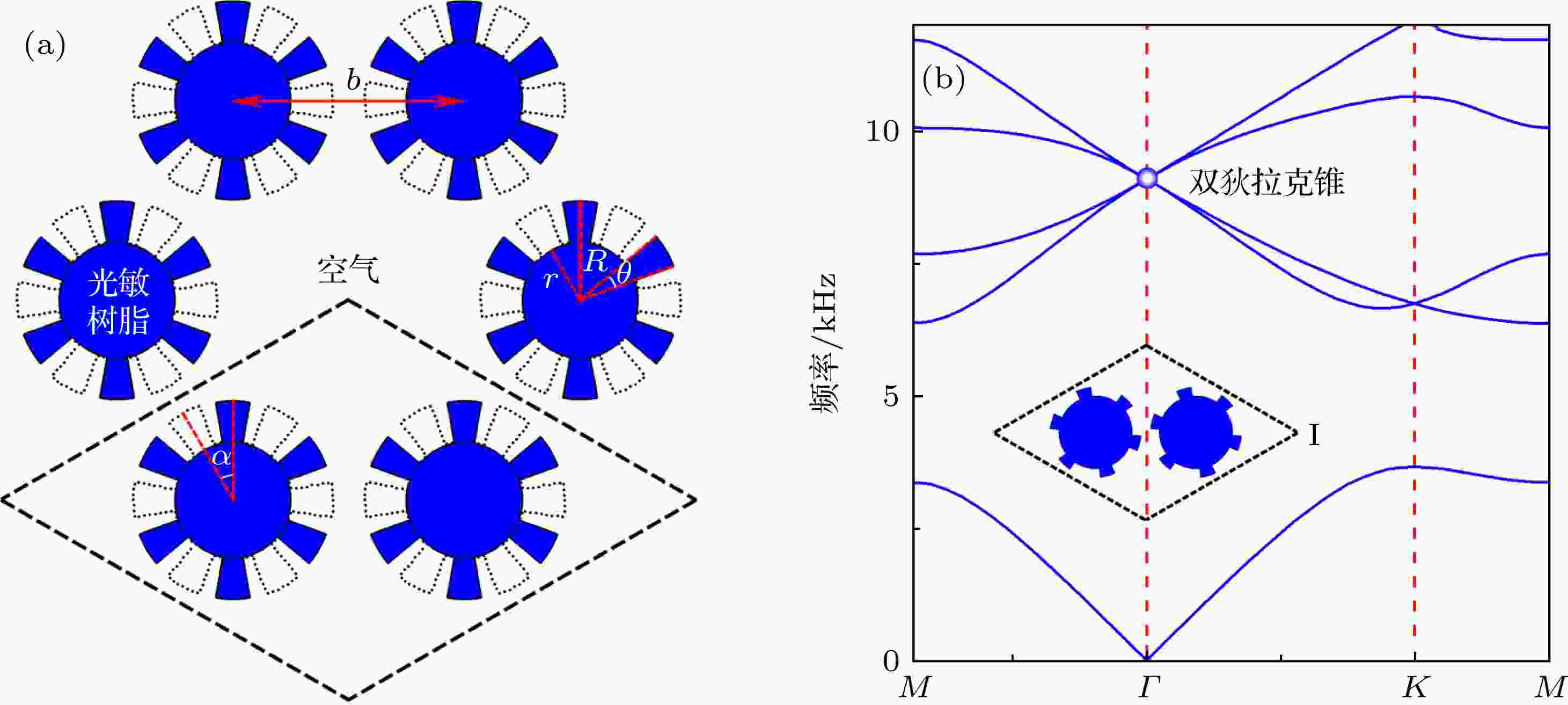
2019, 68 (22): 224301.
doi:10.7498/aps.68.20190951
Abstract +
Based on honeycomb-lattice sonic crystals with gear-like scatterers, we study and design a pseudospin-dependent dual-band acoustic topological insulator. Compared with cylindrical scatterers with only a single tunable structure parameter (radius), there exist four tunable parameters for the gear scatterer, which enables the sonic crystal to realize four-fold accidental degeneracy at two different frequencies simultaneously. By changing structure parameters of the gear-like scatterers, we can obtain topological phase transitions between two sonic crystals. Based on this, we design acoustic topological waveguides based on two honeycomb-lattice sonic crystals with different topological phases, and introduce two kinds of defects (a lattice disorder and a bend) into the topological waveguide near the domain wall. Numerical simulations show that pseudospin edge states almost immune to two types of defects and can pass through the topological waveguides with negligible backscatterings. Compared with the results for the topological waveguide without defects, the measured transmission spectra are almost unchanged with the two types of defects, which further experimentally verify the robustness of pseudospin-dependent edge states. Additionally, by keeping the structure of the sonic crystals unchanged, we can also obtain another four-fold accidental degenerate Dirac point and the corresponding topological sound phase transitions in the high-frequency region. The simulations show that there also exists a pair of edge states in the overlapped bulk bandgap of the two sonic crystals in the high-frequency region. It is worth noting that the tiny gap between two edge states is larger than that in the low-frequency region, which may arise from the greater difference between the distributions of pressure eigenfunction of two sonic crystals. The proposed dual-band acoustic topology insulator has potential applications in multi-band sound communication and sound information processing.

2019, 68 (22): 226101.
doi:10.7498/aps.68.20191101
Abstract +
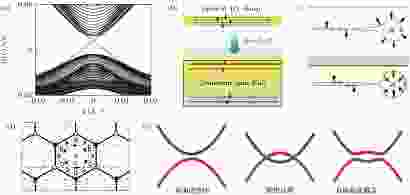
2019, 68 (22): 226801.
doi:10.7498/aps.68.20191631
Abstract +
Topological state is a rapidly emerging branch of condensed matter physics in recent years, among which two-dimensional topological insulators (2D TIs) have attracted wide attentions due to their great potential in basic research and applications. The 2D TI has insulating bulk state and conductive edge state. Its edge state is protected by time inversion symmetry and will not be backscattered by weak disordered impurities on the boundaries, thus forming a dissipationless edge conductive channel. Compared with 3D TIs, the edge state of 2D TIs can only propagate in two directions, meaning stronger anti-interference with robustness, thus is of great significance for the development of advanced integrated circuits with low energy consumption. Among many experimental methods for studying two-dimensional materials, scanning tunneling microscopy is a surface-sensitive tool with high atomic and energy resolution to locally detect the electronic structure of the material surface. By detecting the edge state of 2D materials in real space, it is particularly suitable for characterizing their topological properties. This paper traces the research progress of 2D TIs, and illustrates their spectroscopic evidences to resolve the nontrivial properties of the one-dimensional edge states. Combined with theoretical calculations, the topological edge states are verified to reside within the bulk energy gap, as well as being localized in the vicinity of step boundaries with a specific spatial distribution in real space. Finally, we discuss the tunability and manipulations of 2D topological materials through structural and external fields, which show promising prospects for applications in future spintronics and energy-saving devices.

2019, 68 (22): 227101.
doi:10.7498/aps.68.20191538
Abstract +
Electronic band crossing can not only form zero-dimensional nodal points, but also one dimensional nodal lines and two dimensional nodal surfaces. These topological band features have been attracting significant research interest, as they may lead to many special physical properties. In this article, we review the progress in this field, including the conceptual development, the character and classification of these nodal structures, and the material realization.
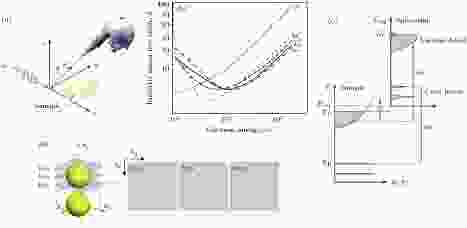
2019, 68 (22): 227102.
doi:10.7498/aps.68.20191544
Abstract +
Topological semimetal, known as a type of topological quantum materials without energy gap, has attracted lots of research interests due to its unique physical properties such as novel quasiparticles, giant magnetoresistance and large carrier mobility. Topological semimetal can be further classified into topological Dirac semimetal, topological Weyl semimetal, topological nodal-line semimetal and topological semimetals with " new fermions”. The high-resolution angle-resolved photoemission spectroscopy (ARPES) has emerged as a powerful experimental technique to directly visualize the electronic structure and identify the characteristic topological electronic states in topological semimetals. Here we would briefly introduce the ARPES technique and review some of the recent progress of ARPES study on the electronic structures of typical topological semimetals. We would focus mostly on the physics origin and ARPES signature of topological electronic structures and hope the readers would find it interesting and useful in the understanding of this material class which both is important in physics and has promising application potentials.

2019, 68 (22): 227202.
doi:10.7498/aps.68.20191433
Abstract +
Topological insulators (TIs), with unique bulk insulating and two-dimensional surface conducting states, show great promise of future optospintronics and spintronics applications, where a complete knowledge of the charge and spin dynamics is quite essential. Thus, the non-equilibrium properties inside TIs have attracted enormous attention. Here in this paper, we review the latest achievements in this field. The focus will be mainly on the experimental study, covering the ultrafast dynamical properties of charge, phonon, and spin. We hope that this review can stimulate further studies, especially theoretical research concerning the properties of topological insulators out of thermodynamic equilibrium.
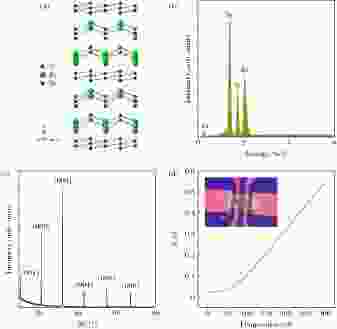
COVER ARTICLE
2019, 68 (22): 227203.
doi:10.7498/aps.68.20191501
Abstract +
Planar Hall effect(PHE) is a newly emerging experimental tool to detect chiral anomaly and nontrivial Berry curvature in topological semimetals, as chiral-anomaly-induced negative magnetoresistance is sensitive to the angle between magnetic fieldBand currentI. Here we demonstrate the PHE in a topological nodal-line semimetal ZrSiSe device by electric transport measurement. According to our analysis, we conclude that the PHE results from the trivial anisotropic magnetoresistance (AMR). We argue that there is no inevitability between PHE and chiral anomaly, and some other mechanisms can induce PHE. This work indicates that PHE cannot be considered as evidence of chiral anomaly and one may seek for non-topological origin in such studies.
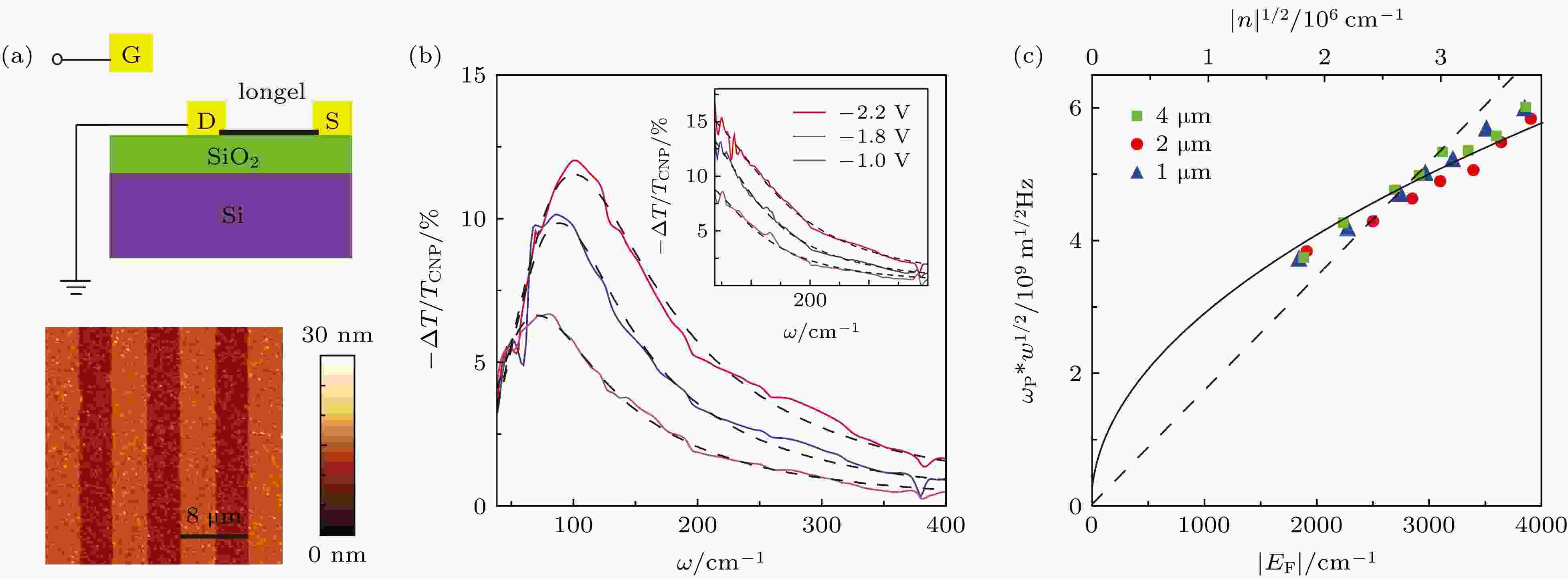
2019, 68 (22): 227801.
doi:10.7498/aps.68.20191098
Abstract +
Plasmonics plays an important role in the development of nanophotonics, which allows breaking diffraction limit and controlling light in deep-subwavelength scale due to the strong interaction between light and free carriers. Noble metals and 2-dimensional electron gas have been the main platforms for studying plasmonics over the past decade. The metal-based plasmonic devices have exhibited great potential in various applications, including integrated photonic systems, biological sensing, super-resolution imaging and surface-enhanced Raman scattering, etc. Because of the high carrier density, plasmons of noble metals are realized in the near-infrared to visible frequency range. With the rapid development of new materials, many other plasmonic materials are discovered to exhibit new properties. One example is the graphene plasmons working in the mid-infrared and terahertz spectral range, which exhibit strong field confinement and frequency tunability due to the massless Dirac fermions and other exotic electrical and optical properties. Recently, topological materials, the band structures of which are composed of cones with linear dispersion like in graphene, are discovered, such as the topological insulators, Dirac semimetals, Weyl semimetals and nodal line semimetals, providing another platform to study the Dirac plasmons. Such linear dispersion results in small electron mass and unique carrier density dependence of plasmons. In addition, topological materials possess a tremendous amount of exotic electron properties, such as the ultrahigh mobility, topological surface states and chiral anomaly in Weyl semimetals, etc. Many of these electronic properties can be inherited by the collective oscillation of free electrons, promising new possibility for plasmonics. Here, the experimental observations of plasmons in topological insulators and topological semimetals are reviewed, with special focus on the studies based on electron energy loss spectrum and Fourier transform infrared spectroscopy. At the end, other topological materials with potential for hosting 2D plasmons are discussed. This review provides an overview of plasmons in topological semimetals and may stimulate further quest of more exotic features for plasmons.
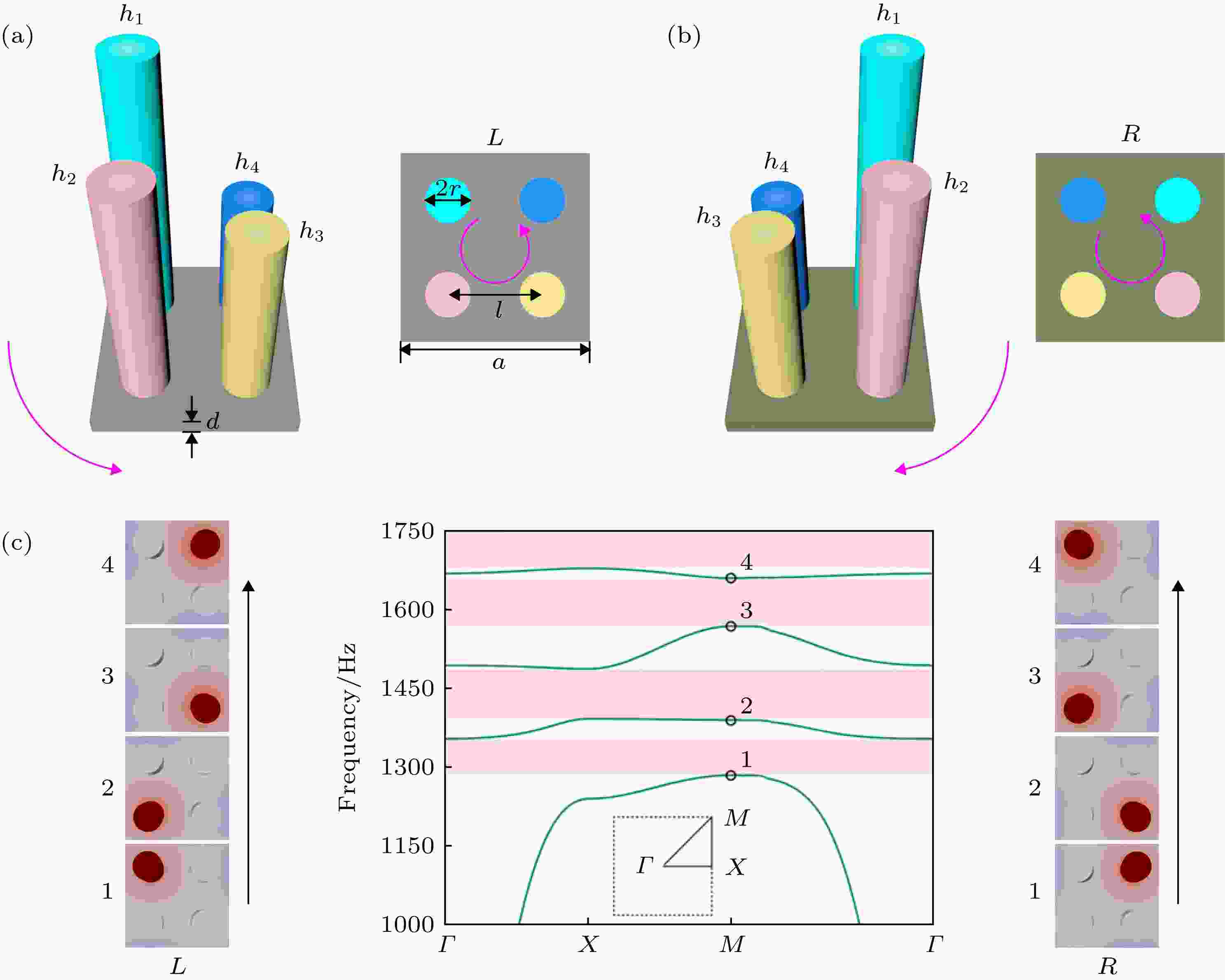
2019, 68 (22): 227802.
doi:10.7498/aps.68.20191007
Abstract +
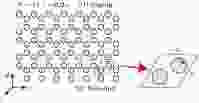
2019, 68 (22): 227803.
doi:10.7498/aps.68.20191452
Abstract +
Topology photonic, a combination of topology physics and optics provides novel visions to the demonstration of theoretical physics and designs principles to new optical devices. Being a key tool to condensed matter physics, tight-binding model helps the development of topology physics. We found that by changing the background material from vacuum to an effective medium with negative permittivity in traditional photonic crystals, a one-to-one correspondence to tight-binding model can be found for this new type of photonic crystal. We show by numerical simulations the existence of edge states located at both the zigzag and bearded boundaries of a honeycomb-lattice photonic crystal imbedded in negative permittivity material. Two experimental realizations are proposed that it is possible to build up a demonstration platform working at microwave frequencies to verify corresponding topology physics theories using simple photonic crystal structures. We hope that the successful verification of new topology physics can further trigger applications in optics.
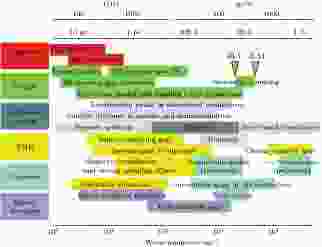
2019, 68 (22): 227804.
doi:10.7498/aps.68.20191510
Abstract +
Topological semimetal represents a novel quantum phase of matter, which exhibits a variety of fascinating quantum phenomena. This class of materials not only have potential applications in electronic devices, but also represent one of the hottest topics in the field of quantum materials. According to the band structure of these materials in the three-dimensional momentum space, topological semimetals can be classified into Dirac semimetals, Weyl semimetals and nodal-line semimetals. Extensive studies on these materials have been conducted using various techniques. For example, angle-resolved photoemission spectroscopy (ARPES) has directly observed the Fermi arc that connects two Weyl points with opposite chiralities in the surface states of Weyl semimetals; the Dirac points, Weyl points as well as the Dirac nodal line in the bulk states have also been revealed by soft X-ray ARPES; the observation of negative magnetoresistance in transport measurements has been taken as the evidence for the chiral anomaly in Weyl and Dirac semimetals; the chirality of the Weyl fermions have been detected by measuring the photocurrent in response of circularly polarized light; in addition, strong second harmonic generation and THz emission have been observed, indicating strong non-linear effects of Weyl semimetals. Infrared spectroscopy is a bulk-sensitive technique, which not only covers a very broad energy range (meV to several eV), but also has very high energy resolution (dozens of µeV). Investigations into the optical response of these materials not only help understand the physics of the topological phase and explore novel quantum phenomena, but also pave the way for future studies and applications in optics. In this article, we introduce the optical studies on several topological semimetals, including Dirac, Weyl and nodal-line semimetals.

2019, 68 (22): 227805.
doi:10.7498/aps.68.20191363
Abstract +
The manipulation of surface acoustic wave (SAW) in phononic crystal plays an important role in the applications of SAW. The introduction of topological acoustic theory has opened a new field for SAW in phononic crystals. Here we construct pseudospin modes of SAW and topological phase transition along the surface of phononic crystal. The local SAW propagation is realized by air cylindrical holes in honeycomb lattice arranged on rigid substrate, and the Dirac cone is formed at theKpoint of the first Brillouin zone. Furthermore, using the band-folding theory, double Dirac cones can be formed at the centerГspoint in the Brillouin zone of compound cell that contains six adjacent cylindrical air holes. The double Dirac cone can be broken to form two degenerated states and complete band gap by only shrinking or expanding the spacing of adjacent holes in the compound cell. It is found that the direction of energy is in a clockwise or counterclockwise direction, thus the pseudospin modes of SAW are constructed. The shrinkage-to-expansion of the compound cell leads to band inversion, and the system changes from trivial state to nontrivial state, accompanied by the phase transition. According to the bulk-boundary correspondence, the unidirectional acoustic edge states can be found at the interface between trivial system and nontrivial system. Then we can construct a topologically protected waveguide to realize the unidirectional transmission of surface waves without backscattering. This work provides a new possibility for manipulating the SAW propagating on the surface of phononic crystals and may be useful for making the acoustic functional devices based on SAW.
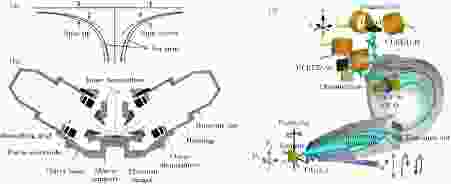
2019, 68 (22): 227901.
doi:10.7498/aps.68.20191450
Abstract +
GENERAL

2019, 68 (22): 220201.
doi:10.7498/aps.68.20191132
Abstract +
Using two-stage light gas gun, we study the hypervelocity impact characteristics of spacecraft key component, solar cell arrays. The damage morphologies in the ground simulation tests match well with those on-situ orbital impacts. The main characteristics of mechanical damage, including the central pit, cover glass shatter zone, and conchiodal spallation, are measured by using a microscope under 20 times magnification. To study the mechanical damage properties in solar arrays, we carry out 15 shots totally, under different impact locations, impact velocities, and particle diameters. Under the condition of impact angel of zero degree, the damage equation of perforation diameter of solar arrays and the damage equation of the diameter of shatter zone in cover glass are developed, respectively. The results show that the perforation diameter and the diameter of cover glass shatter zone are mainly related to the diameter of particle with 2/3 power, while related to the velocity of impact with 1/6 power. Compared with the damage equation in the literature, the damage equations in this article are very suitable for describing hypervelocity impact damage properties of solar arrays used in our country's spacecraft. The results are of significance for our country's aerospace engineering.
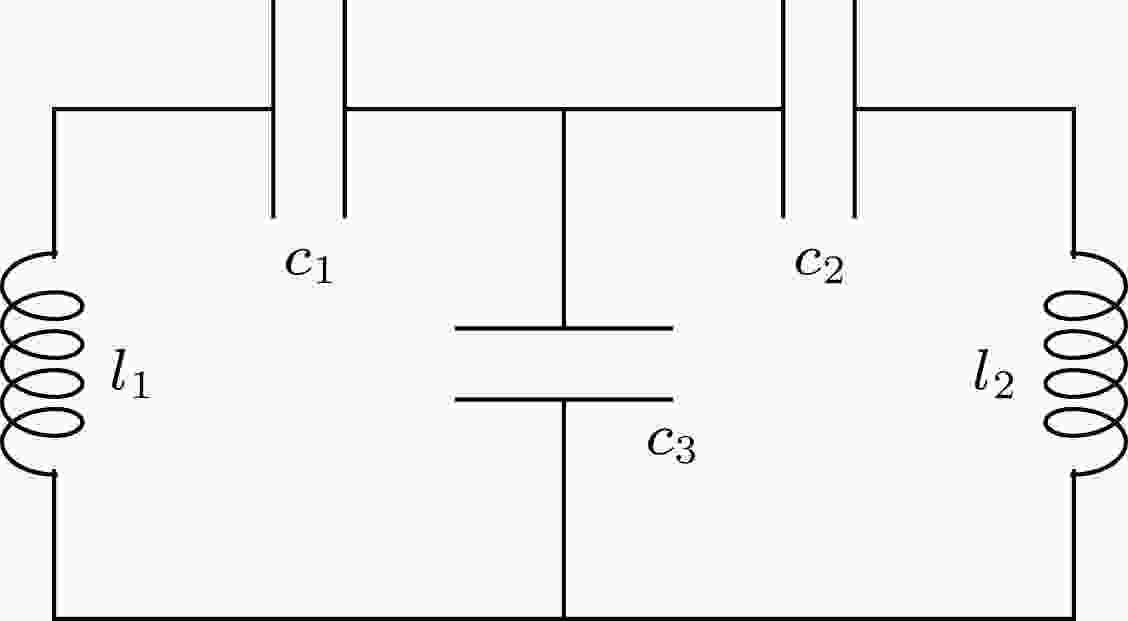
2019, 68 (22): 220301.
doi:10.7498/aps.68.20190651
Abstract +
The Invariant Eigen-operator (IEO) method is widely used in solving the eigenfrequencies of the coulped quantum mesoscopic circuits. The previous IEO method is complicated but stylized, we always wasted much time in this boring processes. Here we extended the IEO method to the matrix form based on Lagrangian of the complex mesoscopic circuits, and express the ideas and processes of the previous calculations of the IEO method in a very simple matrix form. The mathematical methods we used is the indicator representation of the matrix, and we got a very simple and convenient matrix form of the IEO method. This form has important significance for the calculation of large-scale complex multi-loop mesoscopic circuits. Moreover, the matrix form of the IEO method is very friendly to the programming implementation of the complex quantum mesoscopicL−Ccircuits, it is probably a most optimal algorithm for calculating the eigenfrequencies of the quantum mesoscopicL−Ccircuits. In addition, with some help of computer programs, we used this method to calculate the eigenfrequencies of threeL−Cmesoscopic circuits, including two cases with and without mutual inductance. We revealed some relevant properties of these circuits by calculating results, indicating that the eigenfrequency is only related to the element properties of the mesoscopic circuit itself. Finally, we found that this method can also be used in other areas like atom-light coupling systems and solid state physics.
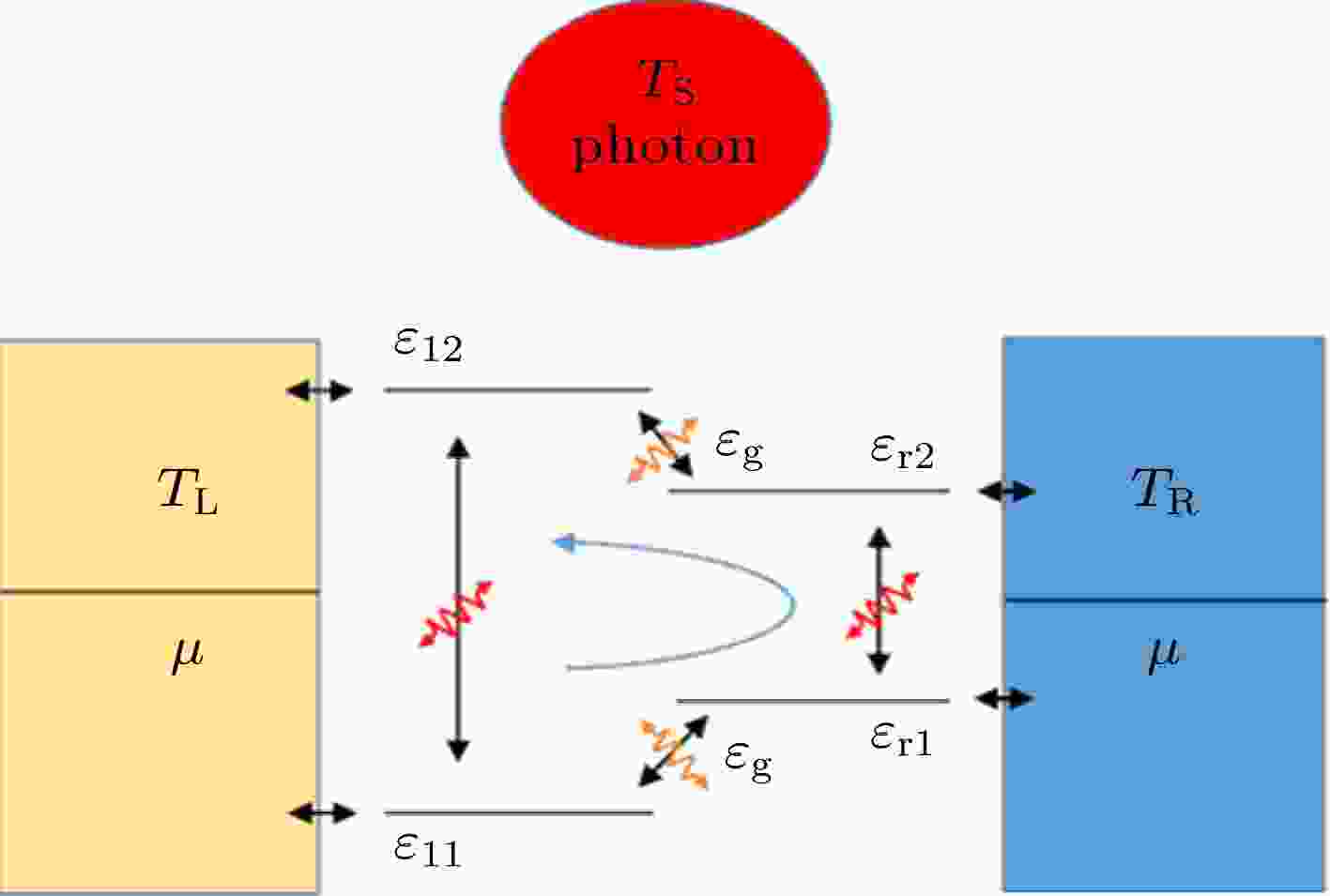
2019, 68 (22): 220501.
doi:10.7498/aps.68.20191091
Abstract +
A model of quantum dot refrigerator driven by photon, which consists of two two-level quantum dots, a photon reservoir and two leads, is proposed in this paper. Comparing with previous studies, we consider the transitions of electrons between different energy levels in a single quantum dot, which is more practical.Based on the theory of master equation and the assumption of weak coupling, we derive the expression of the cooling rate and the coefficient of performance of the refrigerator and obtain the condition of the tight coupling of the refrigerator operation. Next, we plot numerically the performance characteristic curves between the cooling rate and the coefficient of performance in the case of the tight coupling and in the general case. We find that the curves between the cooling rate and the coefficient of performance are opened loops for tight coupling, but they are closed loops in the general case. And we gain the conclusions that the refrigerator can be reversible under the condition of the tight coupling, while it can be irreversible in the general case. Then the optimally operating range of the refrigerator is determined. Finally, the effect of the temperature of the photon reservoir, transition coefficient, and temperature ratio on the performance of refrigerator under the conditions of the maximum cooling rate are studied, and also the coefficient of performance under the maximum cooling rate, the maximum coefficient of performanceand the cooling rate under the maximum coefficient of performanceare analyzed in detail.
ELECTROMAGNETISM, OPTICS, ACOUSTICS, HEAT TRANSFER, CLASSICAL MECHANICS, AND FLUID DYNAMICS

2019, 68 (22): 224201.
doi:10.7498/aps.68.20190972
Abstract +
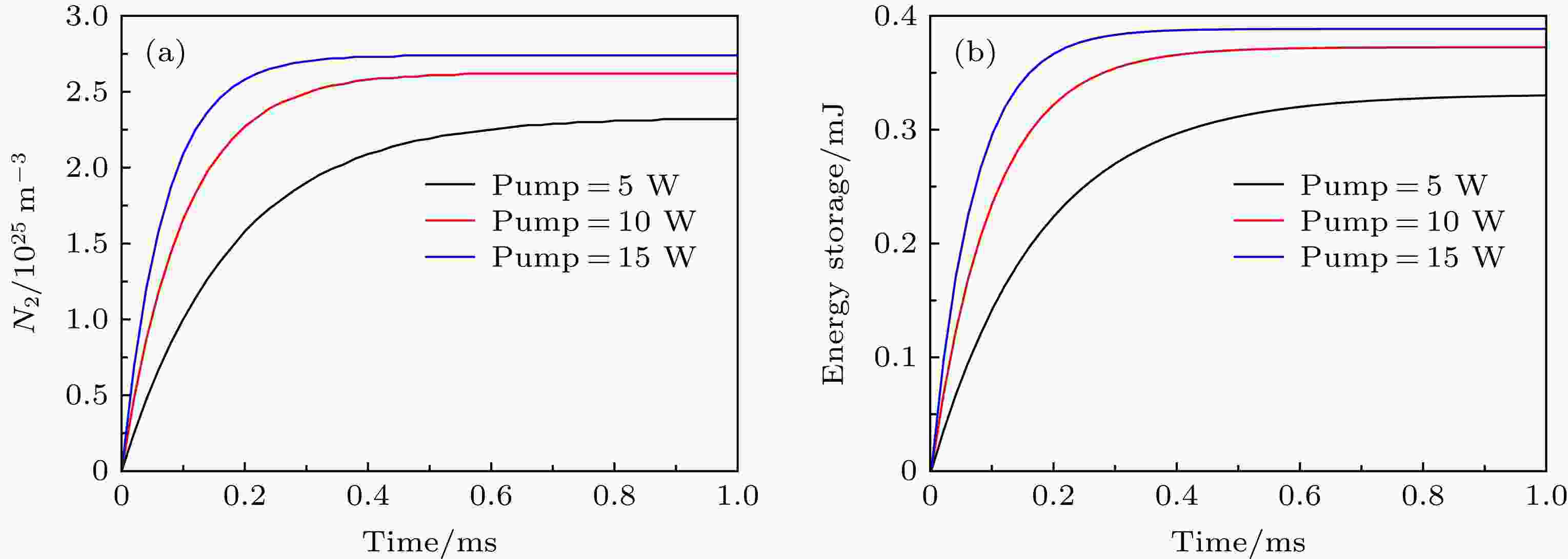
2019, 68 (22): 224202.
doi:10.7498/aps.68.20190616
Abstract +
The upper-laser-level lifetime (fluorescence lifetime) of the rear earth dopant in the active fiber is a key parameter which indicates the performance of the fiber, and takes an important role in designing the laser system. However, the accurate measurement of fluorescence lifetime in active fiber remains challenging, which mainly rely on the direct measurement of laser induced fluorescence lifetime of the active fiber or lifetime measurement of bulk laser glass. The former method suffers the error due to the amplified spontaneous emission and the reabsorption process, while the latter ignores the influence of high temperature and tension produced during the fiber drawing on the emission behavior of the material. Therefore, the accuracy of these measurements can become a problem. In this work, we propose a new approach to measuring the upper-laser-level lifetime of the rear earth dopant in the active fiber based on the power/energy performance of the fiber amplifier. The population inversion, i. e. the energy storage, in the active fiber of a fiber amplifier is a function of upper-laser-level lifetime. Therefore, the upper-laser-level lifetime can be derived by measuring the average power or output pulse energy of the amplifier, given that the energy storage in the active fiber is extracted adequately by a seed laser. Using the rate equations, we model the population inversion and energy storage in the active fiber each as a function of pump power and time, and the resulting relationship between the upper-laser-level lifetime and the average output power. The upper-laser-level lifetimes of several commercial Yb-doped active fibers are experimentally measured by this method through using the fibers as the gain media of the amplifier operated at 1064 nm. The convenience of experimental data processing is also discussed. The measured lifetime and evolution trend of the lifetime with dopant concentration exhibitthat they are in good agreement with those from other reports and the theoretical model, which verifies the feasibility of this method.
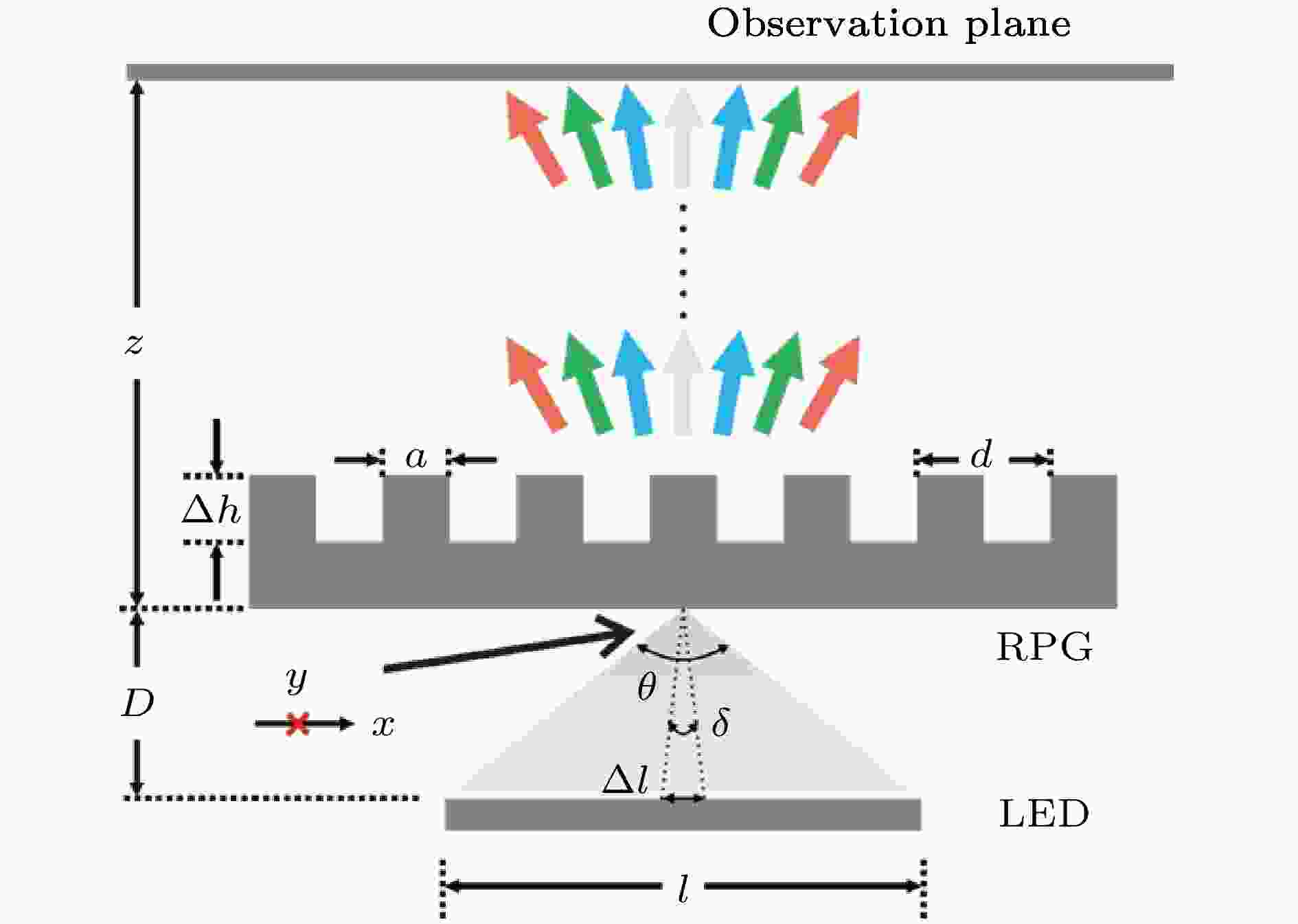
EDITOR'S SUGGESTION
2019, 68 (22): 224203.
doi:10.7498/aps.68.20190716
Abstract +
With the development of the microstructure fabrication process and the integration of micro-optical elements, diffractive micro-optical elements are widely used in broadband light sources, such as the integrated light guide plate (ILGP). And with the structural feature size of the ILGP decreasing from tens of microns to microns and even sub-microns, the diffraction dispersion phenomenon will inevitably become a prominent problem in research and design of non-dispersion elements. Nevertheless, under the broadband light source illumination, the analysis of the dispersion characteristic of diffraction spectrum of the microstructure array has not been reported in detail. Therefore a theoretical model of micro-optical element with a typical one-dimensional rectangular phase grating (RPG) and a widely used white LED source is established in this paper. The dispersion characteristic of the diffraction spectrum is studied, that is, with the increase of period of the RGP or the cone angle of incident beam, the dispersion of diffraction spectrum weakens. Dispersion parameter C and its formula are proposed, which can precisely measure the chromatic dispersion degree of the diffraction spectrum. Furthermore, the boundary criterion point of non-dispersionC= 0.3 is given explicitly. It is explored that no matter whether the cone angle of incident beam or the RPG period increases, the non-dispersion output light can be obtained only by matching the two parameters to make the dispersion parameterCless than 0.3. Then an RPG sample, of which the structural parameters are consistent with the designed ones, is fabricated by using micro-nano processing technology. By changing the cone angle of incident beam, the luminance and the chromaticity coordinates of the diffraction beam are tested. The analyses of the test results of the fabricated RPG sample show that the spectrum dispersion regularity is in accord with the theoretical analysis. The consistency verifies the correctness of dispersion parameterC, its formula and the non-dispersion boundary criterion point. The dispersion parameterCand non-dispersion boundary criterion point presented in this paper provide a guidance for analyzing the dispersion characteristics when the structural parameters of the integrated light guide plate and other broadband micro-optical element are designed.

2019, 68 (22): 224204.
doi:10.7498/aps.68.20190803
Abstract +

2019, 68 (22): 224205.
doi:10.7498/aps.68.20191039
Abstract +
Reservoir computing (RC) is an improved recurrent neural network with the simplified training process, therefore has broad application prospects. The RC can be implemented in hardware based on a nonlinear physical node and a delay feedback loop. Among the optical implementation schemes, the RC system based on semiconductor lasers can process information at high speed due to the inherently short time scales. However, the performance of the RC system, especially using the optical injection way of input signals, is affected by many factors, such as the virtual node interval, bias current, frequency detuning, feedback strength, injection strength, etc. The first three parameters can be reasonably set according to the existing studies. The feedback strength and injection strength are mostly determined through multiple attempts, and there is no method to follow, which brings great uncertainty to the RC. Although some researchers suggest that the optimal feedback strength is at the edge of consistency, the conclusion is only reached at some specific injection strengths, and nobody knows whether it is still valid when the injection strength and feedback strength change at the same time. Therefore, in this paper we investigate numerically the relationships between the optimal feedback strength and the consistency region under different injection strengths, based on the nonlinear auto regressive moving average of the 10th order (NARMA10) task. It is found that the optimal feedback strength is independent of the edge of consistency when the injection strength is large. Further research shows that the best performance of the RC system occurs at the edge of the injection locking states of the reservoir under the injection of continuous waveform light, different injection strengths and feedback strengths. Therefore this paper presents a method to select the optimal feedback strength and injection strength by using the edge of injection locking states of the reservoir under the injection of continuous waveform light. The method determines the edge of the injection locking states by searching the minimum injection strength for the injection locking states of the reservoir under one feedback strength and the injection of continuous waveform light. Then, along this edge, the optimal feedback strength and the matching injection strength are found by testing the system performance. Based on existing studies of other parameters, a method to select all parameters at the operating point is proposed. For the NARMA10 task, the normalized root mean square error at the operating point selected is as low as 0.3431 only by using 50 virtual nodes, showing that the proposed method of selecting operating point is feasible. From three properties of reservoirs, the reasons for the best performance of the system under these parameters are explained. The universality of this method for regression and classification task is tested by chaotic time series prediction task and handwritten digit recognition task. The results show that the two tasks can achieve good performance under the operating point selected by this proposed method, which verifies the universality of the method.
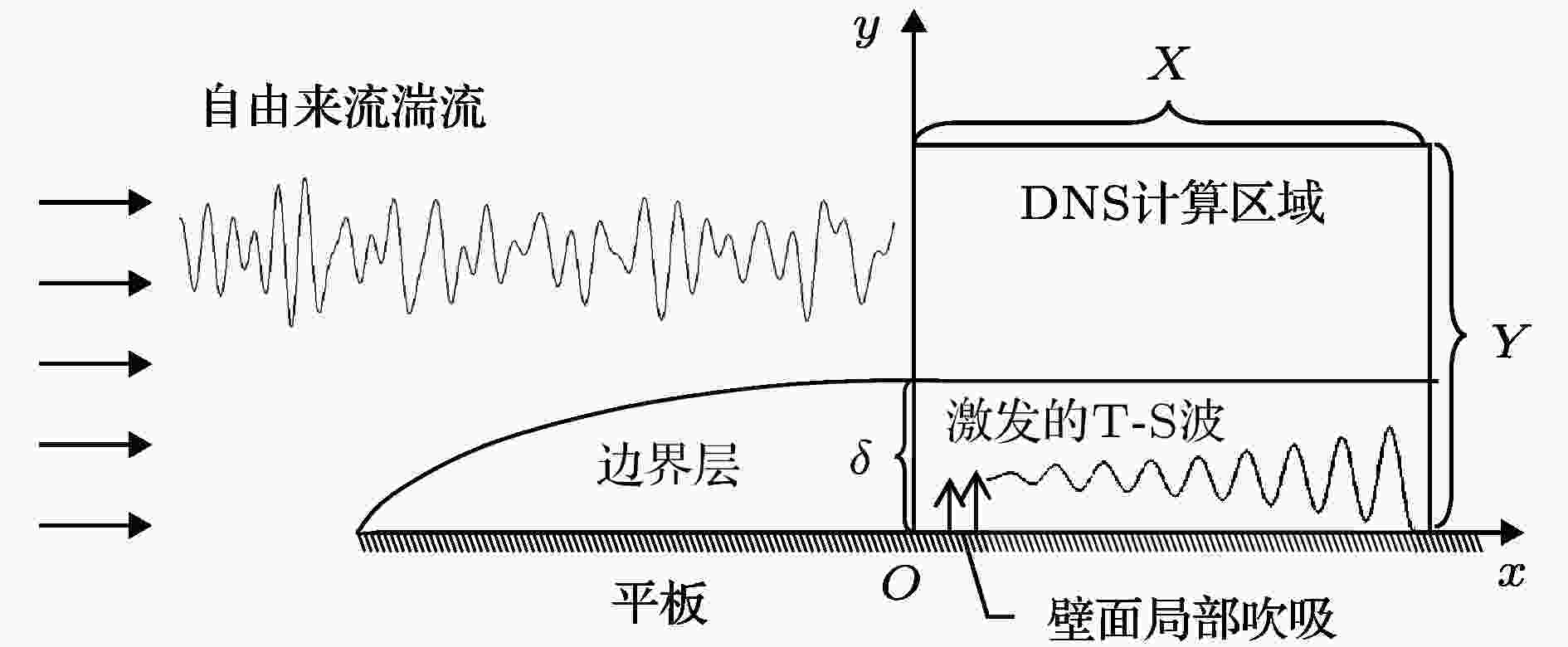
EDITOR'S SUGGESTION
2019, 68 (22): 224701.
doi:10.7498/aps.68.20190684
Abstract +
Boundary-layer receptivity is the initial stage of the laminar-turbulent transition process, and plays a key role in predicting and controlling the transition. The present researches indicate that the boundary-layer receptivity is affected not only by the different sorts of free-stream disturbances or the size, shape and position of the wall localized roughness and blowing/suction, but also by the pressure gradient. Therefore, the local receptivity under the interaction between the free-stream turbulence and localized wall blowing/suction in the pressure-gradient boundary layer is studied in the present work, thus revealing the effect of the pressure gradient on the receptive process and the group speeds of the excited T-S wave packets under the interaction of the free-stream turbulence with localized wall blowing/suction in the boundary layer. High-order finite difference scheme is utilized to discretize the incompressible perturbation Navier-Stokes equation. A modified fourth-order Runge-Kutta scheme is used for time integration. The compact difference scheme based on non-uniform meshes is applied to the spatial discretization. The convective term is discretized by the fifth-order upwind compact scheme. The pressure gradient term is discretized by the sixth-order symmetric compact scheme. The viscosity term is discretized by the fifth-order symmetric compact scheme. Besides, the pressure Poisson equation is solved by the fourth-order scheme on the non-uniform meshes. The favorable or adverse pressure gradient promotes or suppresses the receptivity triggered by the interaction between free-stream turbulence and blowing/suction. And the blowing always induces a stronger receptivity than the suction in the same intensity. The initial amplitude of the T-S wave and wave packet excited in the adverse-pressure-gradient boundary layer are two orders larger than those excited in the favorable-pressure-gradient boundary layer. It is analyzed in detail that the favorable and adverse pressure gradient play a promoting or suppressing role in the growth of the excited T-S wave. Then the influences of the pressure gradient on the amplitudes, growth rates, wave numbers, phase speeds and shape functions of the excited T-S waves are investigated. The intensive research on receptivity in the pressure-gradient boundary layers provides a reference for designing the turbine machinery blades in the practical engineering.
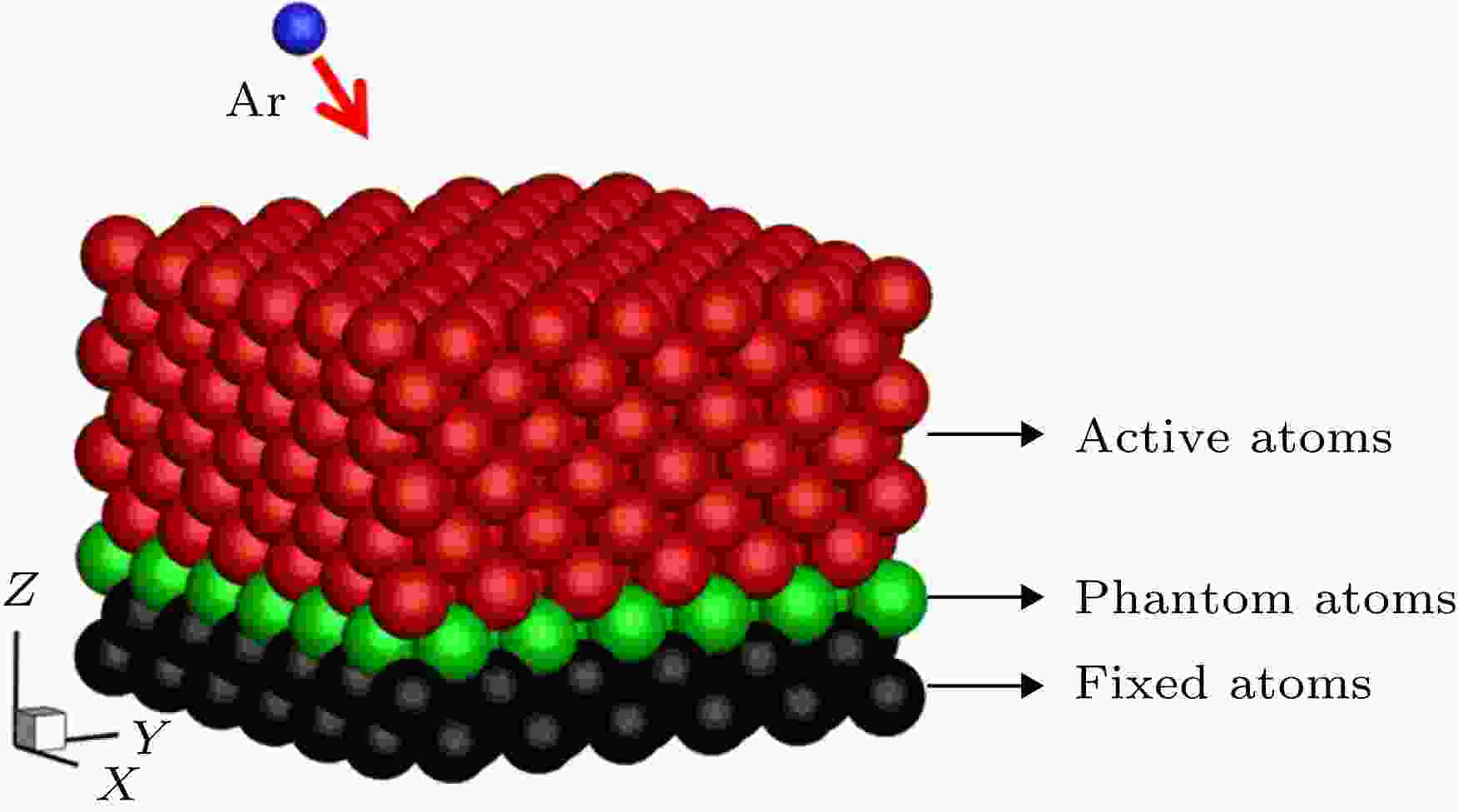
2019, 68 (22): 224702.
doi:10.7498/aps.68.20190987
Abstract +
The accommodation coefficient is an important parameter in the field of rarefied gas dynamics, representing the adaptation level of the momentum and energy between gas molecules and solid surfaces, which is frequently used in the boundary conditions of numerical simulation of rarefied gas flow. In this paper, a physical model of the interaction between a single gas molecule Ar and the metal Pt surface is constructed, which greatly saves computational resources by omitting the collision between gas molecules in the bulk flow. The Pt surface is constructed by the Phontom model to reflect real physical properties. The surface roughness is modeled by a typical pyramid model, which is physically realistic and stable in structure. The molecular dynamics method is used to simulate the collision process of the gas molecules on the solid surface. The velocity sampling method is used so that the incident gas molecules possess the characteristics of macroscopic velocity. According to the average momentum and energy of the gas molecules before incidence and after reflection, the tangential momentum accommodation coefficients (TMACs), the normal momentum accommodation coefficients (NMACs) and the energy accommodation coefficients (EACs) are obtained. Moreover, the variation regularities of the accommodation coefficients with the macroscopic tangential velocity and the macroscopic normal velocity are analyzed under the smooth and rough surface, respectively. The results indicate that the accommodation coefficients have a strong correlation to macroscopic velocity and roughness. The increase of tangential velocity shortens the interaction time of gas molecules with solid surface, which results in the decrease of TMAC, NMAC and EAC of gas molecules, indicating that the tangential velocity has a negative effect on gas-solid adaptation. In addition, the momentum is found to be transformed from the tangential direction to the normal direction at a large tangential velocity, and this transformation tendency becomes more apparent as the tangential velocity increases. However, the influence of normal velocity on the momentum and energy accommodation coefficient is different. With regard to the smooth surface, the increase of normal velocity contributes to the tangential momentum and energy adaptation of gas molecules with the surface. While for the rough surface, the adaptation level of tangential momentum and energy between gas molecules and the surface is weakened as the normal velocity increases. This paper reveals the mechanism of gas molecules scattering on the surface from a microscopic point of view, which is quite different from the macroscopic phenomena. The conclusions of this paper indicate the irrationality of traditional scattering kernel models to represent the degree of accommodation through constant values, which is of great significance for the improvement of boundary conditions in rarefied gas flows.
CONDENSED MATTER: ELECTRONIC STRUCTURE, ELECTRICAL, MAGNETIC, AND OPTICAL PROPERTIES
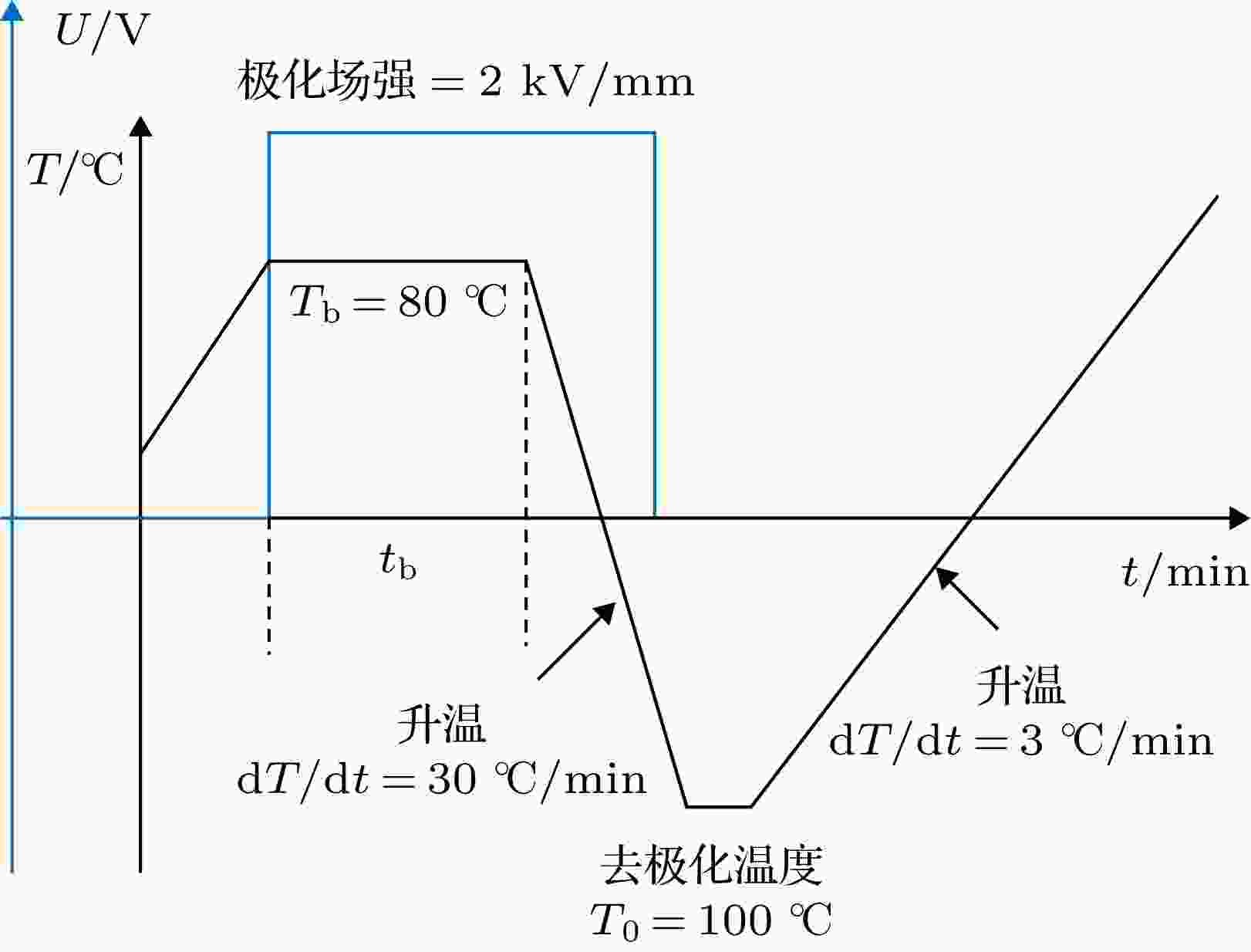
2019, 68 (22): 227201.
doi:10.7498/aps.68.20190741
Abstract +
Surface flashover is the primary limitation to the development of power system and the increase of voltage level. Previous work has proved that the trap can greatly influence flashover performances, but the relationship between trap parameters and surface flashover voltage is not clear. In the paper, we study the effects of crystallization behavior, microstructure, and trap parameters on DC surface flashover performance of semi-crystallinity polymer through adding phenolphthalein which is regarded as nucleating agent in low density polyethylene (LDPE). Micro-IR spectroscopy result proves that phenolphthalein exactly exists in LDPE/phenolphthalein composite. Differential scanning calorimeter (DSC) and scanning electron microscope (SEM) are used to investigate the effect of nucleating agent (phenolphthalein) on crystallinity behavior and microstructure of LDPE, and their results indicate that the phenolphthalein modification greatly changes the crystallization behavior of LDPE. The SEM results show that the spherulite size of LDPE decreases and is distributed more uniformly with the increase of phenolphthalein concentration. The DSC results show that the crystallinity and lamella thickness increase. Thermally stimulated depolarization current (TSDC) is used to characterize the trap parameters of LDPE/phenolphthalein composites. The TSDC results indicate that the shallow trap level (γpeak) increases from 0.19 eV to 0.65 eV and the deep trap (αpeak) increases from 0.81 eV to 0.99 eV with the increase of phenolphthalein concentration. Relationship between microstructure and trap parameters shows that the smaller spherulite size indicates the deeper trap level (for LDPE, the trap level increases from 0.81 eV to 0.99 eV when the spherulite size decreases from 23.2 μm to 14.9 μm), and larger crystallinity means smaller trap density (for LDPE, the trap density decreases from 1404 pC to 612 pC when the crystallinity increases from 34.51% to 43.25%). The DC surface flashover performance increases with the increase of phenolphthalein concentration, and reaches a highest value: when the concentration is 1 wt%, the highest value is increased by 48.42%. Finally, it is concluded that the microstructure of semi-crystallinity polymerinfluences the trap parameters, which affects the surface flashover performance through affecting the carrier transport process in the development process of surface flashover. The trap level and trap density play complementary, cooperation and mutual transformation roles in improving the surface flashover performances as indicated by the analysis of the " U-shaped” relationship between trap parameters and flashover voltage.
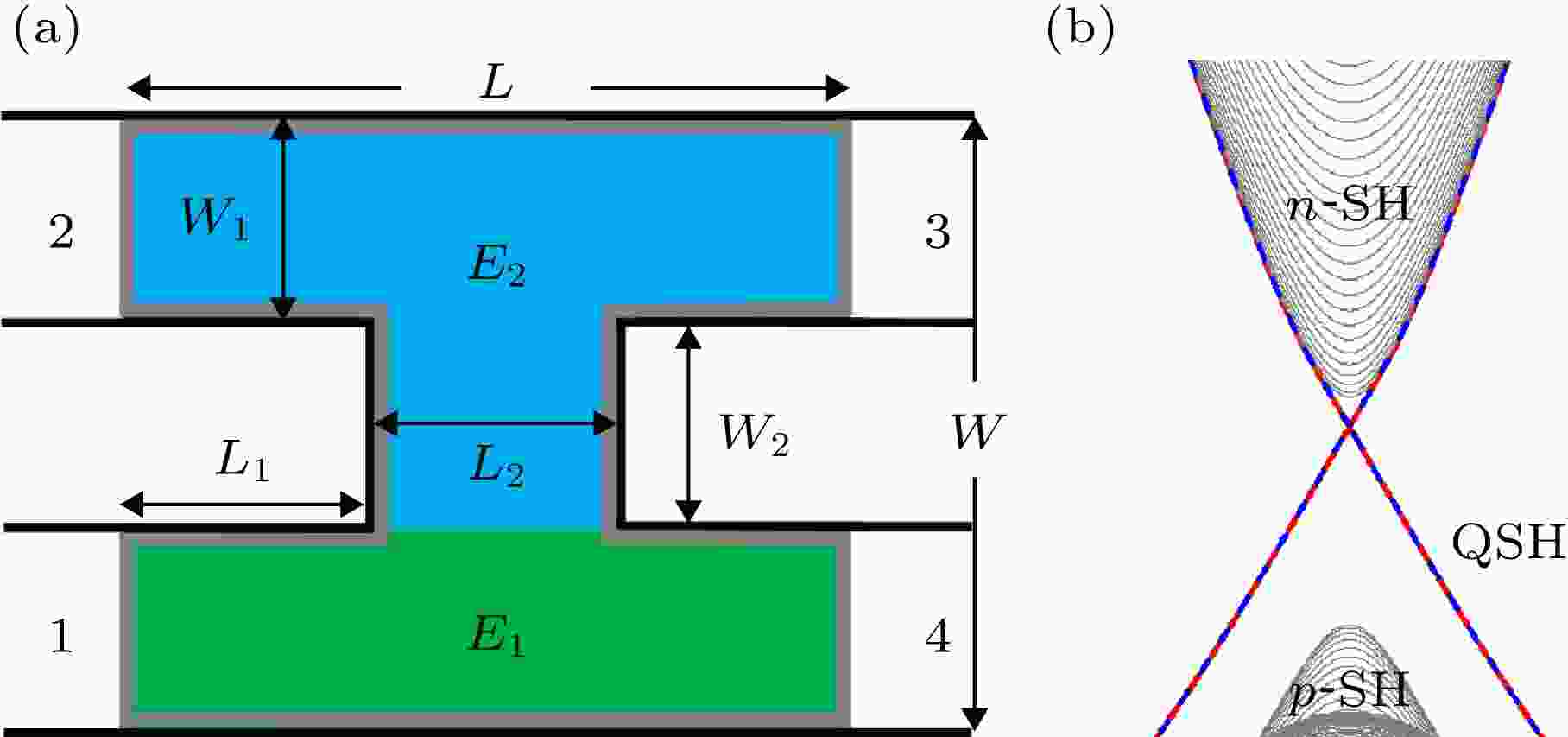
EDITOR'S SUGGESTION
2019, 68 (22): 227301.
doi:10.7498/aps.68.20191072
Abstract +
HgTe/CdTe quantum well is a typical two dimensional topological material which supports the helical edge states and quantum spin Hall effect that is imposing in applying of spin electronic devices. The special plateau valued with
$0.25\;h/e^{2}$
of nonlocal resistance in H-shaped four terminal devices can be used as the fingerprint of quantum spin Hall effect. Based on the HgTe/CdTe quantum well, with the aid of nonequilibrium Green's function theory and multi-terminal Landauer-Büttiker formula, we calculate the nonlocal resistance and study the dephasing effect of spin topological states in the presence of exchange field and external magnetic field. It is found the dephasing processes play a role completely different from exchange field and external magnetic field. The latter destroy time reversal symmetry and change the width and relative position of topological gap, but do not influent the topological stability of helical edge states. In the contrary, dephasing processes don't change the width and relative position, however, they broke the topological stability. We consider two kinds of dephasing: normal dephasing and spin dephasing. In the first kind, the carriers lose only the phase memory while maintaining the spin memory. In the second kind, the carriers lose both phase and spin memories. Because of the spin locking properties, normal dephasing almost have no influence on the helical edge states. While the spin dephasing will induce spin flip backscattering and finally destroy helical edge states seriously.
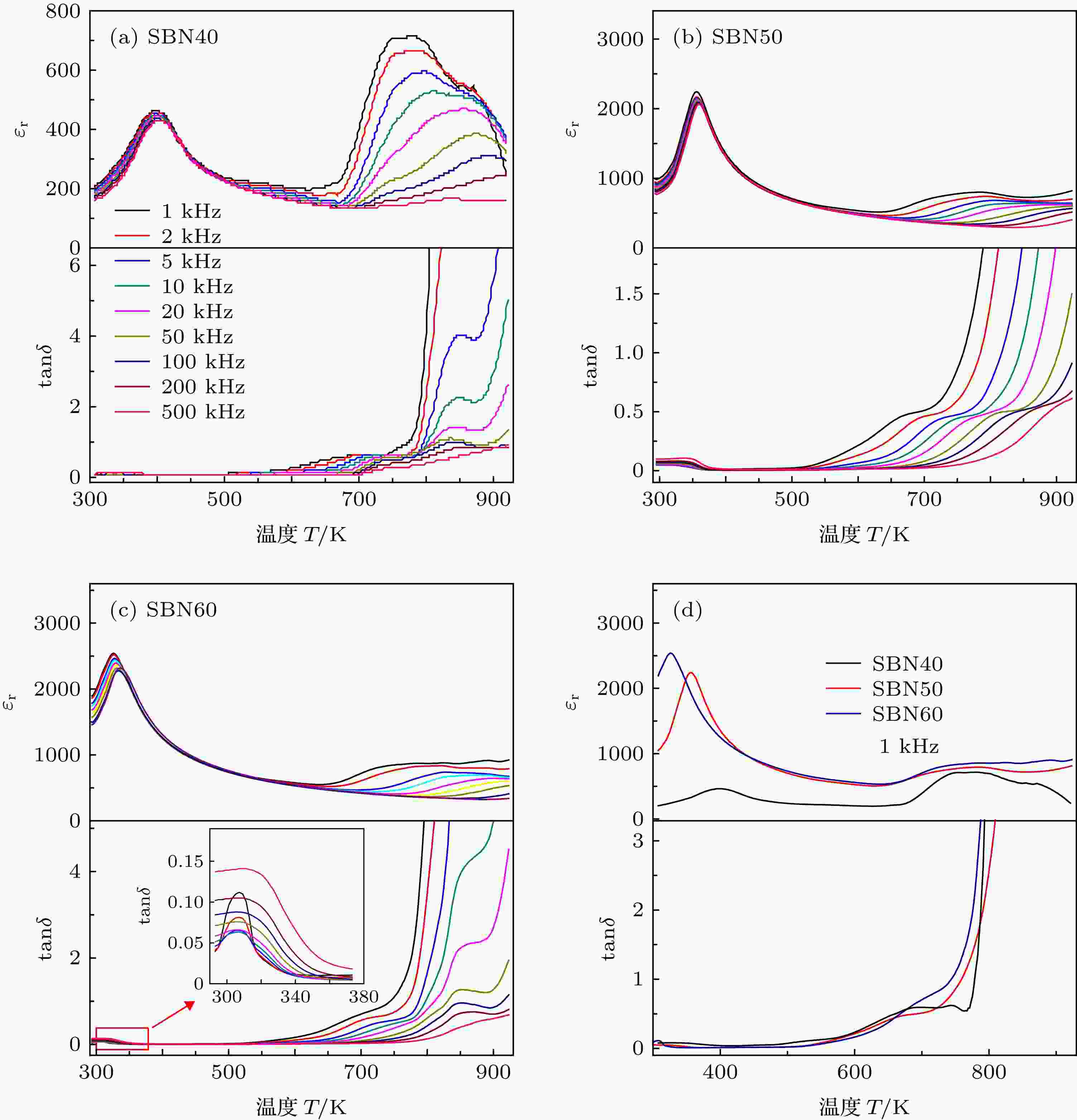
2019, 68 (22): 227701.
doi:10.7498/aps.68.20190562
Abstract +
Due to the various risks caused by lead, the research of lead-free ferroelectric functional ceramics has been one of research hotspots recently. And relaxor ferroelectrics have an important position in materials for ceramic capacitor due to their low temperature change rate and large electrostrictive coefficient. However, the lead-free SrxBa1–xNb2O6ceramic is a non-filled tungsten bronze structural material whose Curie temperature can be adjusted by changing the proportion of Sr composition. The increase of Sr concentration in ceramic can cause relaxor behavior and improve dielectric constant and ferroelectric properties. In this work, SrxBa1–xNb2O6(x= 0.4, 0.5 and 0.6, abbreviated as SBN40, SBN50 and SBN60, respectively) ceramics are prepared by a high-temperature solid-state reaction process. The dielectric properties and the impedances of the SrxBa1–xNb2O6ceramics are investigated in detail. It is worth noting that the high-temperature diffusion for the SrxBa1–xNb2O6has not been studied before. Furthermore, the analysis of high-temperature dielectric behavior and impedance of lead-free functional ceramics is important for the application of functional ceramics in the high-temperature environment. The temperature of phase transition for SBN40, SBN50 and SBN60 are 401.15 K, 355.15 K, and 327.15 K, respectively, which are obtained from the modified Curie-Weiss law. The result shows that the increase of Sr composition leads the phase transition temperature from ferroelectric to paraelectric phase to decrease. In addition, the calculated value of diffusion phase transition parameterγfor SBN40, SBN50 and SBN60 are 1.53, 1.90 and 1.94, respectively, showing that it is close to an ideal relaxor ferroelectric with the Sr content increasing in SBN ceramics at low temperature. In addition, it is noticed that a similar diffusion appears in at high temperature. This phenomenon is unrelated to the phase transition, but it is corresponding to high temperature dielectric relaxation which is related to oxygen vacancy. As expected, the impedance spectroscopic data present a thermally activated relaxation phenomenon. Finally, activation energy for conduction and relaxation are calculated from the impedance and dielectric data through the Arrhenius law. Comparing the activation energy values for conduction and relaxation, it can be obviously concluded that the trap-controlled conduction process should be responsible for the relaxation process of sample. And the hopping of ions, caused by oxygen vacancies, plays a critical role in the dielectric relaxation process at high temperature.
INTERDISCIPLINARY PHYSICS AND RELATED AREAS OF SCIENCE AND TECHNOLOGY

2019, 68 (22): 228101.
doi:10.7498/aps.68.20190740
Abstract +
How to overcome the friction between the micro components has become a key point of the successful operation of the micro/nano-electric mechanical systems. The understanding of the friction mechanism of the alkane liquid film confined between two substrates is important when the friction law on a macro/nano scale is not applicable. In this work, the molecular dynamics simulations are used to study the effect of the chain length on the friction properties of the liquid films that are confined between two golden substrates. There are seven pure alkane liquid films that are composed of one molecule CnH2n+ 2(n= 6, 8, 10, 12, 14, 16, 18), and six mixed alkane liquid films that are composed of two molecules C6H14/CnH2n+ 2(n= 8, 10, 12, 14, 16, 18) with a ratio of 1∶1. The results show that the friction force and the coefficient of friction of pure alkane liquid films both increase as the chain length increases when the carbon atom number is less than 12, whereas the friction property keeps stable when the carbon atom number of the alkane molecule is greater than 10 and the pure hexadecane liquid film has the largest friction force. In the mixed films, the addition of short chain alkane molecules can strengthen the friction, and the hexane/dodecane mixed film has the maximum friction force. The short chain molecule dilutes the C8H18film and C10H22film which cause the friction force to decrease. During the sliding progress, the formation of solid-like high density-packet layers is the main reason for the friction reduction. When no solid-like layer or just one solid-like layer is formed at the interface of golden base, the liquid alkane film is liquid-like and its viscosity becomes much larger than that in the normal state, which leads to high friction force. The short chain molecules reduce the density of the solid-like layers, which causes the film to transform from solid-like state to liquid state, thus resulting in the increase of friction. The friction property mainly depends on the layered structure, and the interaction between the golden surface and liquid film contributes to the friction. This study helps to understand the friction mechanism of ultra-thin liquid films.
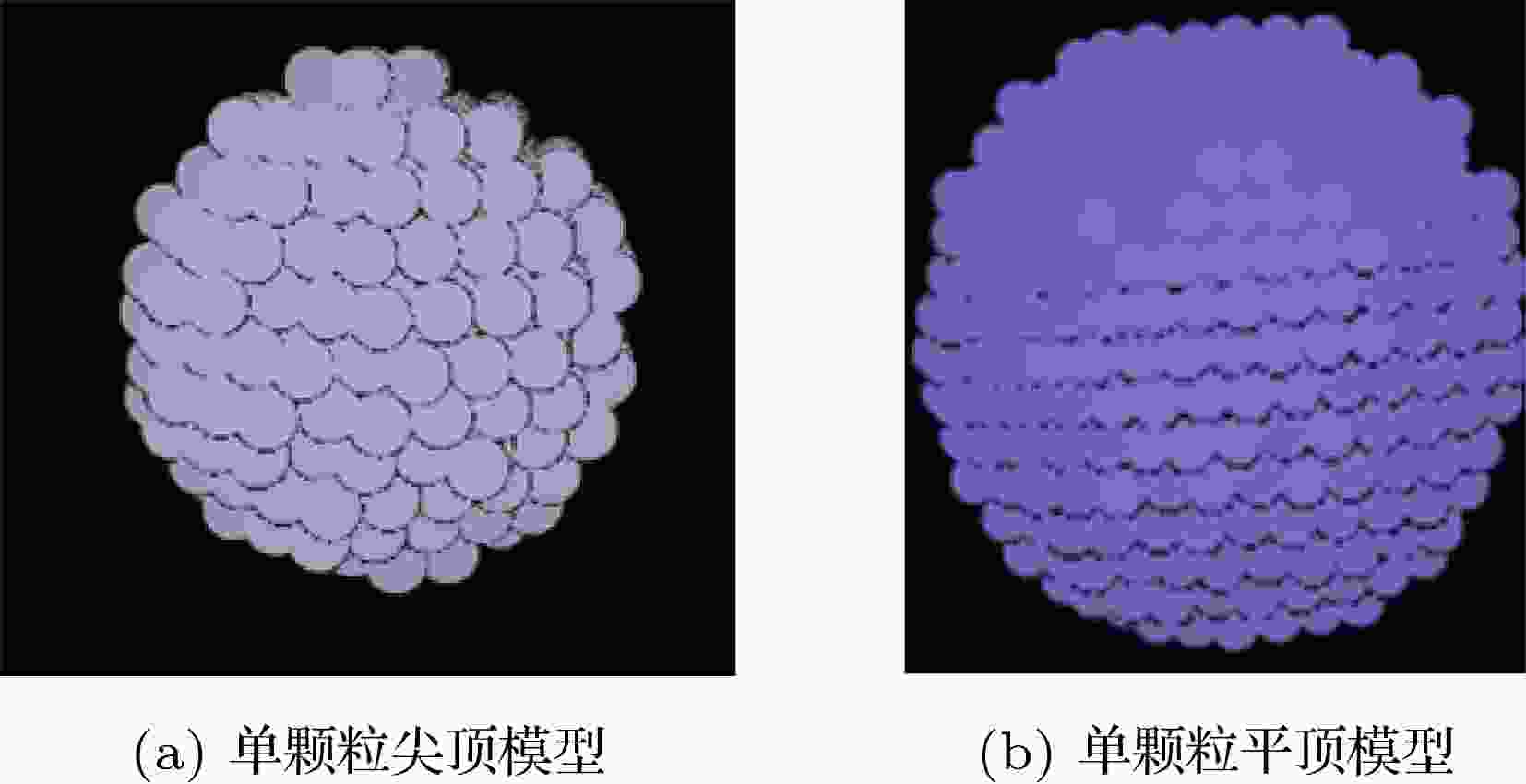
2019, 68 (22): 228301.
doi:10.7498/aps.68.20190993
Abstract +
The ignition mechanism of the explosive particles under impact has been a hot topic, but the research progress is slow. With the rapid development of computer science, the three-dimensional discrete element technique (DM3) is regarded as an efficient and intuitive method to study the explosive ignition under impact. As is well known, octahydro-1,3,5,7-tetranitro-1,3,5,7-tetrazocine (HMX) is one of the most effective explosive particles in performance, which has high density and energy and thus possesses a significant application. In this paper, the deformation and ignition of HMX particles under impact of drop hammer are investigated based on the three-dimensional discrete element technique. Specifically, the computational process for shock loading as well as chemical reaction is employed in DM3 model through using the state equation of Hugoniot, the reactive model of Arrhenius, the state equation of JWL. The results show that the size, degree of accumulation, defect and the force of drop hammer can definitely influence the ignition and propagation of HMX particles. Under the same shock loading, the particles on a small scale would produce less power. On the same scale of particle, the less the number of particles, the shorter the deformation time is, so the temperature increases more easily. As for the different shapes of single particles, the deformation and ignition first appear from the ‘top’ for the spire particles, and then the deformation and ignition of flat particles happens from ‘shear’. Specifically, there are two results of the internal defect HMX particles under impact: the particles with bigger size (discrete elements 256 × 34 = 8704) have a temperature advantage near the ‘hole’, while the temperature advantage of the particles with the smaller size (discrete elements 93 × 35 = 3814) appears on the ‘top’.
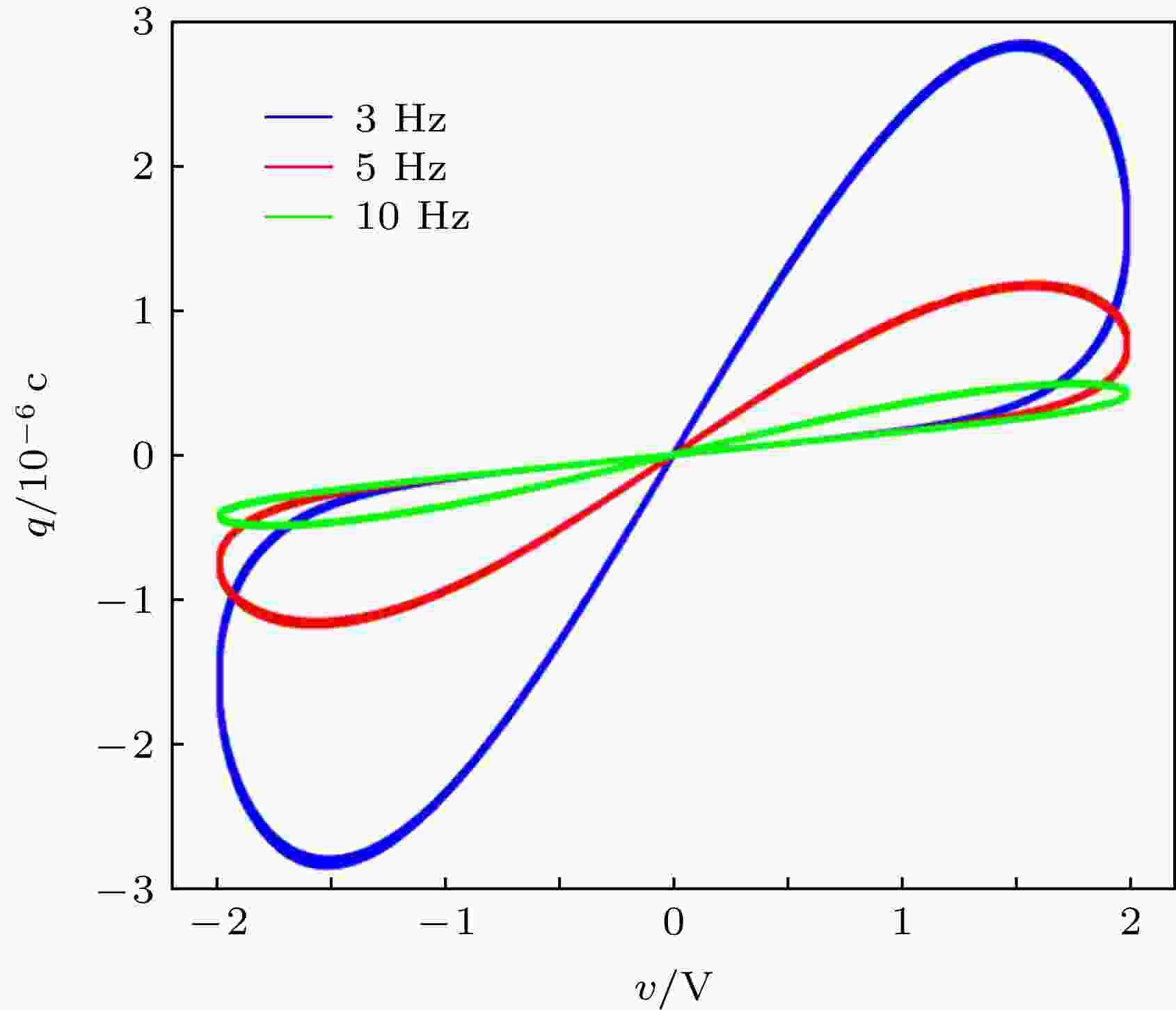
2019, 68 (22): 228401.
doi:10.7498/aps.68.20190849
Abstract +
Memcapacitor is a kind of non-linear capacitor with memory capability. In order to study the electrical characteristics of memcapacitor and its application circuit, a quadratic model of voltage-controlled memcapacitor is proposed, and an emulator which can dynamically simulate theq–vcharacteristics of the memcapacitor is designed by using a current feedback operational amplifier, multiplier and other devices. The emulator does not need to be converted by any memristor or meminductor. It can work in floating or grounding state. The constitutive relation of the memcapacitor emulator is deduced, and the circuit parameters of the emulator are designed. Based on the simulations and experimental results, the pinched hysteresis loop and its dependence on frequency are verified. In addition, the range of the memcapacitance under periodic signal excitation is discussed and the influence of periodic excitation signal on the range of memcapacitance is analyzed. Through observing the dynamic route map (DRM) of the memcapacitor, its nonvolatility and the stability of the equilibrium point are also studied. The simulation results show that the memcapacitor can exhibit infinite stable equilibrium points and can be stabilized at any equilibrium state. With respect to pulse excitation signal, the effects of pulse width and amplitude on the switching on or off of the state for the memcapacitor is analyzed, and the corresponding switching method and rule are proposed. This characteristic of memcapacitor makes it have potential applications in non-volatile memory, neural network and other fields. Based on the proposed memcapacitor model, a multivibrator circuit is designed. Then, the working principle of the oscillator is analyzed, and the equation of oscillator is derived. The output voltage of the oscillator, the terminal voltage of the memcapacitor, the flux and the charge of the memcapacitor, and the pinched hysteretic curve of the memcapacitor during oscillation are tested experimentally. Besides, various oscillation waveforms whose frequency and duty cycle are different are observed and further analyzed. The circuit structure of the memcapacitor multivibrator designed in this paper is very simple. It can generate stable rectangular wave signals with controllable frequency and duty cycle, and it can be used in testing signal or driving the device.
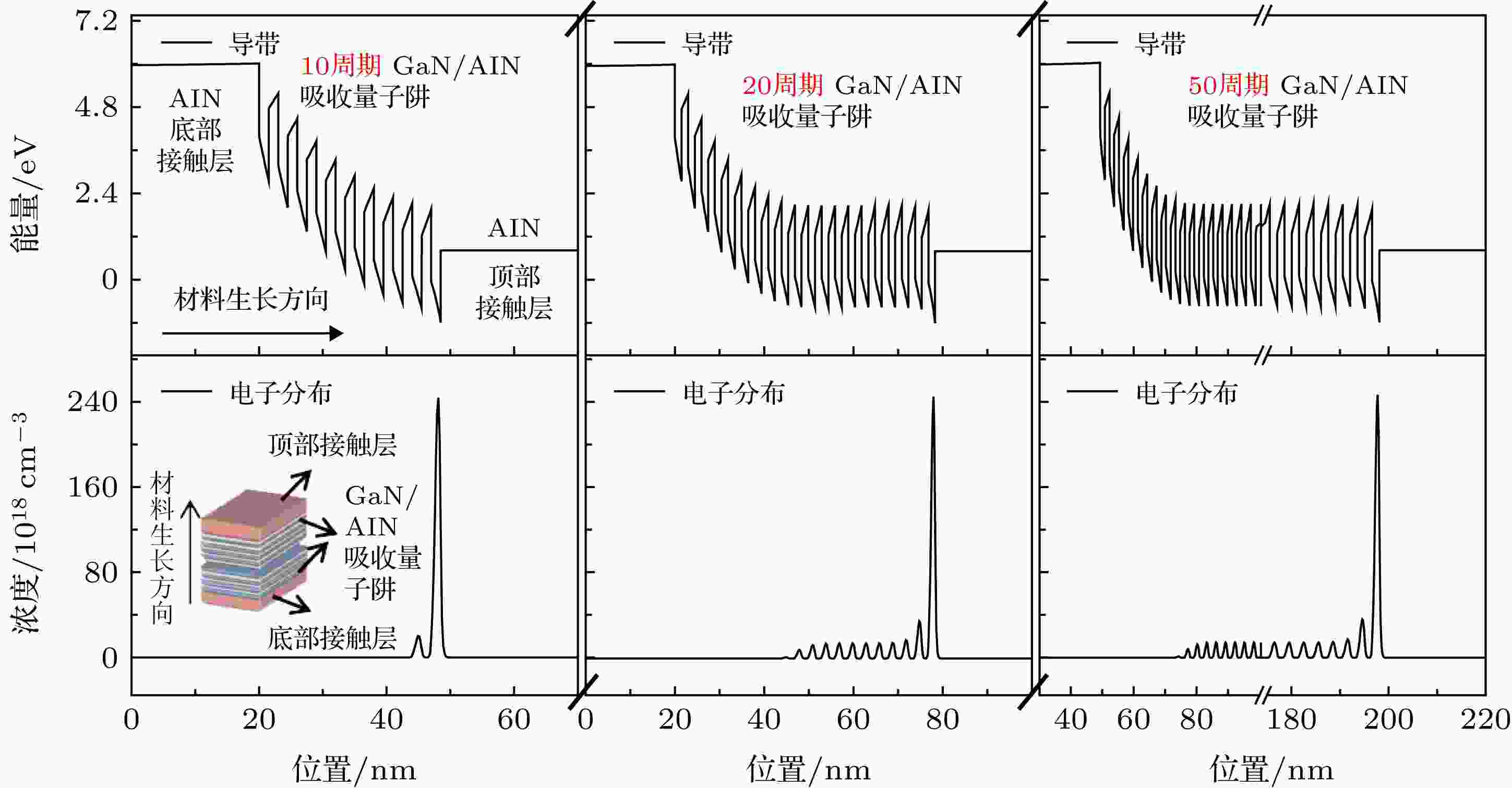
2019, 68 (22): 228501.
doi:10.7498/aps.68.20190722
Abstract +








